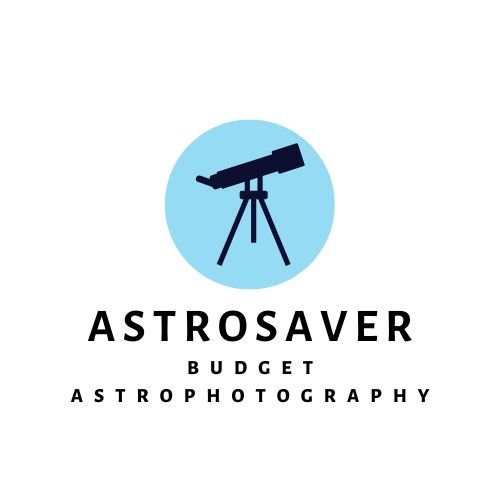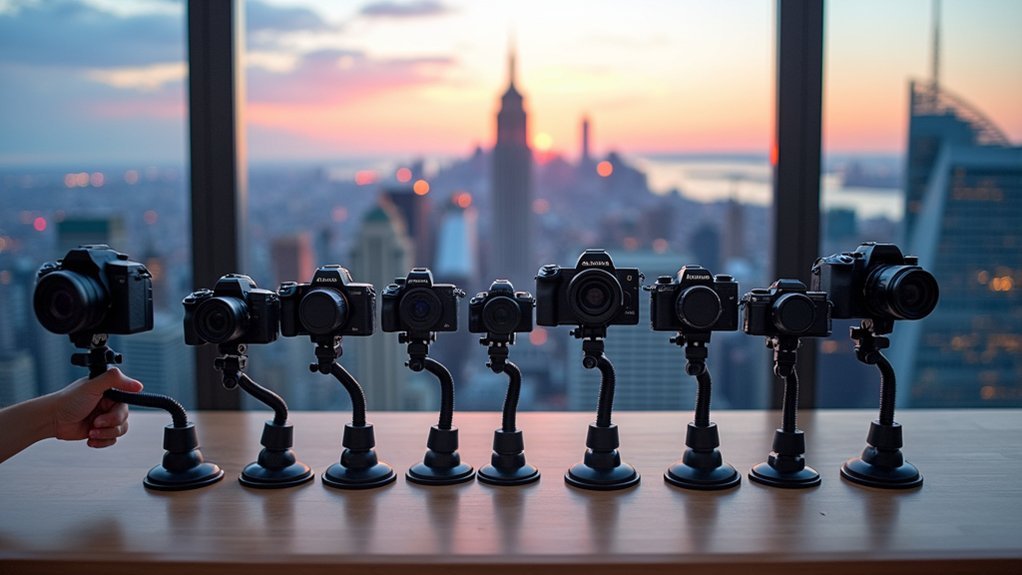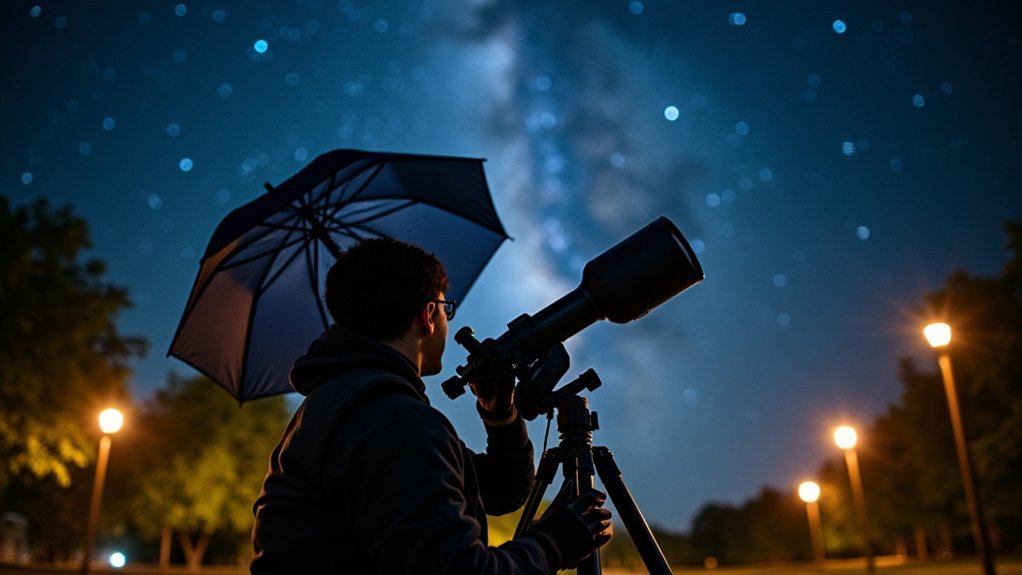T2 adapters provide you with a secure, standardized way to connect your camera to your telescope for astrophotography. You'll benefit from their universal M42x0.75 thread size, which guarantees seamless compatibility across different equipment. The two-piece design offers superior stability and precise camera alignment, while proper adapters reduce vignetting and prevent corner clipping in your images. Understanding the right T2 adapter setup can transform your astrophotography results from good to exceptional.
Understanding T2 Adapter Basics and Standards

The world of T2 adapters opens up extensive possibilities for astrophotography enthusiasts. These essential connectors use a standardized M42x0.75 thread size, allowing you to attach various optical devices to your camera setup seamlessly.
If you're planning to use T2-mount lenses, you'll need to focus manually since these adapters don't support autofocus capabilities. You'll also require a T-ring specific to your camera brand to complete the connection. The optical length of these adapters typically measures around 50mm when properly installed.
While originally developed by Tamron, the T2 mount system has become a universal standard in specialized photography.
What makes T2 adapters particularly valuable is their versatility across different camera systems and optical accessories. Whether you're connecting telescopes, extension tubes, or specialized lenses, you'll find that T2 adapters provide the standardized interface you need for precise optical alignment.
Essential Benefits of T2 Adapters in Telescope Mounting
When properly selected and installed, T2 adapters release significant advantages for telescope-mounted astrophotography.
You'll benefit from their standardized thread compatibility, typically M42x0.75 or M48x0.75, ensuring seamless connection between your camera and telescope system. The two-piece design of T2 adapters offers superior stability and secure mounting compared to single-piece alternatives.
The rotational flexibility you'll gain through set screws allows precise alignment of your camera's index mark, helping you achieve perfect framing.
Set screws on T2 adapters provide essential rotational control, letting you perfectly align your camera for optimal framing of celestial targets.
You can adapt to various telescope types, from refractors to SCTs, while maintaining ideal optical performance.
T2 adapters reduce vignetting and prevent corner clipping, especially essential for large-format cameras.
You'll enhance your imaging capabilities by accessing different focal lengths and magnifications.
This versatility supports advanced astrophotography techniques, whether you're capturing wide-field views or high-magnification targets with better exposure control.
Choosing the Right T2 Adapter for Your Setup

Successfully selecting the right T2 adapter requires careful consideration of multiple compatibility factors for your astrophotography setup.
First, match your camera's brand and mount type to guarantee proper mechanical connection. You'll need to verify thread compatibility, particularly the standard M42x0.75 male thread that connects to accessories.
For mirrorless cameras, you might need additional adapters. Since many modern telescopes feature 2-inch Crayford focusers, choosing a compatible T2 adapter size is essential.
Consider your telescope's focuser size (1.25" or 2") and type (refractor, reflector, or SCT) when choosing an adapter. If you're using optical accessories like field flatteners or focal reducers, confirm your adapter accommodates their thread sizes and maintains proper backfocus distance.
Don't forget to check the adapter's build quality and stability. If you'll use filters or need specific orientations, select an adapter with rotational adjustment capabilities via set screws.
Maximizing Image Quality With T2 Adapters
Maximizing image quality through T2 adapters requires a strategic approach to both equipment selection and setup configuration.
You'll get the best results by choosing larger diameter adapters (2") that reduce vignetting, especially if you're using a full-frame camera. A key benefit is that these adapters can be purchased for under $20 while delivering professional results. When you integrate your T2 adapter with focal reducers or field flatteners, make sure the adapter length matches your reducer's back focus requirements.
To optimize your images, you'll need to properly align your entire optical path and guarantee your adapter's threading matches both your camera's T-ring and telescope's focuser specifications.
For Schmidt-Cassegrain telescopes, you'll want specific T-adapters with 2"-24 threads. By carefully managing these factors, you can achieve clearer, brighter images with minimal distortion in your corners and better overall field illumination.
Common Challenges and Solutions in T2 Mounting

When you're setting up your T2 adapter system, you'll need to watch out for three critical challenges: thread cross-threading, temperature-related fit issues, and back-focus adjustments.
You can prevent thread damage by carefully aligning the components and never forcing connections that don't turn smoothly. The True-2 UltraWide design found in many modern adapters helps minimize connection issues while providing superior light transmission.
Managing temperature changes and achieving proper back-focus distance will guarantee your setup maintains precise focus and ideal image quality throughout your imaging session.
Avoiding Thread Cross-Threading
As one of the most frustrating challenges in astrophotography, thread cross-threading can quickly derail your imaging session and potentially damage expensive equipment.
To prevent this issue, you'll need to follow several essential practices when mounting your camera to your telescope.
First, always verify your threads are clean and free from debris before attempting to connect components.
Take time to visually align the threads, and don't force the connection if you feel resistance. Instead, gently rotate the adapter until you feel it naturally engage.
You'll also benefit from applying a small amount of thread lubricant to reduce friction and verify smooth engagement.
Remember to invest in high-quality T2 adapters with precise threading specifications – they're worth the extra cost to protect your valuable equipment.
The M42x0.75 thread standard used in T2 adapters ensures broad compatibility across most camera and telescope systems.
Managing Temperature-Related Fit Issues
Since temperature fluctuations can considerably affect T2 adapter performance, you'll need to account for thermal expansion during your imaging sessions.
Different materials expand at varying rates, which can lead to fit issues and misalignment of your equipment.
To manage these challenges, store your adapters in insulated containers to stabilize their temperature before use.
You'll want to apply moisture-proof coatings to prevent condensation problems and maintain precise alignment.
Regular maintenance checks are essential – inspect your adapter's fit and threads frequently, especially during seasonal changes.
Keep a log of temperature conditions to identify patterns that might affect your setup.
When selecting adapters, opt for those made from aluminum or metal alloys, as they offer minimal thermal expansion and better durability in varying weather conditions.
Consider routing your adapter connections through a powered USB hub to maintain consistent data transmission and reduce temperature-related connectivity issues.
Proper Back-Focus Adjustment
While achieving proper back focus might seem challenging, it's essential for capturing sharp astrophotos with your T2 setup. Your focal reducers and field flatteners need precise spacing to work correctly, and incorrect back focus will result in distorted stars, especially with large sensors or fast optics. Many camera manufacturers specify a 55mm back focus distance for optimal performance.
You'll need to take into account these key factors when adjusting your back focus:
- Use modular spacers for incremental adjustments down to 0.5mm
- Match your T2 thread specifications carefully with your equipment
- Think about using variable extension tubes for flexible optical path lengths
- Calculate total back focus by subtracting adapter lengths from required distance
You can achieve ideal results by using variable spacers and ensuring proper placement of corrector elements.
Remember that different telescope designs have specific back focus requirements, so always check manufacturer specifications before making adjustments.
Advanced Techniques for T2 Adapter Usage

When mastering T2 adapter usage, you'll need to understand several advanced techniques that greatly enhance your astrophotography results.
You can combine T2 adapters with field flatteners to achieve sharp focus across your entire frame, while using focal reducers will give you wider fields of view and increased brightness.
For ideal results, you'll want to integrate your T2 adapter setup with image stacking software. This allows you to combine multiple exposures, reducing noise and enhancing detail in your final images.
If you're shooting with a full-frame camera, opt for 2-inch or T2 adapters to minimize vignetting and capture more light. Always ensure you have a threaded connection to maintain proper alignment and prevent any unwanted tilt in your imaging setup.
Don't forget to use extension tubes for precise back focus adjustment – they're essential for achieving the sharpest possible images.
Best Practices for T2 Adapter Maintenance
You'll need to clean your T2 adapter threads after each imaging session to prevent debris buildup that can affect performance.
Regular inspections of the threads will help you catch any signs of wear or damage before they become serious problems.
Store your T2 adapters in a sealed container with silica gel packets to protect them from moisture and dust when they're not in use. If you encounter issues, always check the manual first as it contains essential troubleshooting guidance for optimal adapter performance.
Clean Threads After Use
Since proper maintenance considerably extends the life of your T2 adapter, cleaning the threads after each use should become a standard part of your astrophotography routine.
Proper care is critical since T2 adapters serve as the vital connection between your DSLR and telescope, making clean threading essential for optimal imaging results.
Use soft-bristled brushes and lint-free cloths with gentle solvents like alcohol or optical cleaners to remove debris without damaging the threads.
When cleaning your T2 adapter's threads, follow these essential steps:
- Use compressed air to blow out loose particles before applying any cleaning solutions
- Clean with soft cotton swabs dipped in optical cleaner, avoiding abrasive materials
- Dry thoroughly with compressed air or let air-dry completely
- Apply thread protectors once fully dry to prevent contamination during storage
Remember to work in a clean environment and inspect the threads carefully before reassembly to guarantee peak performance during your next imaging session.
Inspect For Thread Damage
Regular cleaning of T2 adapter threads sets the stage for thorough damage inspection – a key maintenance step that preserves your equipment's longevity. You'll need to examine threads visually for wear signs and verify the standard M42x0.75 pitch using precise measuring tools like calipers or thread gages.
| Inspection Point | Action Required |
|---|---|
| Visual Check | Look for scratches, strips, or corrosion |
| Thread Pitch | Measure to confirm M42x0.75 standard |
| Connection Test | Check secure fit without over-tightening |
Don't skip inspecting both male and female threads for damage. If you spot issues like cross-threading or galling, address them immediately using thread chasers for minor repairs. For severe damage, you'll need to replace the adapter to prevent equipment damage. Remember, proper thread inspection helps avoid costly repairs and guarantees reliable telescope-to-camera connections.
Proper Storage Solutions
Effective storage practices form the foundation of T2 adapter maintenance, protecting your investment and ensuring reliable performance.
You'll want to keep your adapters in a dry, room-temperature environment away from direct sunlight. Use dedicated cases or pouches with desiccants to maintain ideal conditions. A designated tool chest provides excellent organization and protection for your delicate adapter components.
Organize your storage system efficiently with these essential practices:
- Label containers clearly and maintain an inventory checklist
- Use anti-static materials to protect sensitive electronics
- Store cables in labeled ziplock bags to prevent tangling
- Keep cleaning supplies like microfiber cloths and soft brushes readily available
For additional protection, implement a color-coding system to categorize different adapters and their accessories.
Don't forget to routinely inspect your stored equipment for signs of wear and maintain proper documentation for all your components in one accessible location.
Frequently Asked Questions
Can T2 Adapters Be Used With Vintage Film Cameras?
Yes, you can use T2 adapters with vintage film cameras if there's a T-ring available for your camera's mount type. You'll need to focus manually, but they work well for astrophotography and macro photography.
What's the Average Lifespan of a Quality T2 Adapter?
You'll find that a well-maintained T2 adapter can last 5-10 years or more. However, your actual lifespan depends on usage frequency, storage conditions, and quality of materials in your specific adapter.
Do Temperature Changes Affect T2 Adapter Performance During Long Exposures?
You won't notice significant performance issues from temperature changes during long exposures. Quality T2 adapters are designed with materials that minimize thermal expansion, ensuring your camera maintains a stable connection throughout your imaging session.
Are T2 Adapters Suitable for Solar Photography With Proper Filters?
Yes, you can safely use T2 adapters for solar photography when paired with proper solar filters. Just make certain your filters are securely mounted first, and they don't interfere with the adapter's light path.
Can Multiple T2 Adapters Be Stacked Without Affecting Image Quality?
You shouldn't stack multiple T2 adapters as it'll degrade your image quality. You'll experience vignetting, light loss, and potential misalignment. Instead, use a single, high-quality adapter for the best results.
In Summary
T2 adapters are your vital link between camera and telescope, ensuring precise alignment and secure mounting for ideal astrophotography results. You'll find they're invaluable for maintaining proper spacing, reducing vibration, and protecting your equipment. By choosing the right T2 adapter and maintaining it properly, you're setting yourself up for crisp, clear celestial images. Don't overlook this essential component in your astrophotography journey.





Leave a Reply